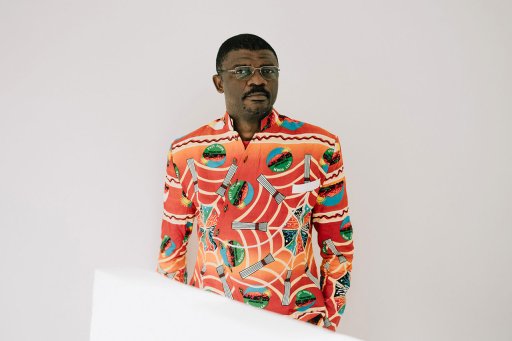Franck Courchamp is Director of Research at the CNRS. At the University of Paris-Saclay, he heads a research team focusing on biodiversity dynamics and the impact of human activities on ecosystems and species. He specializes in the study of invasive exotic species, i.e. those introduced into an environment outside their natural range, whose integration eventually alters an entire ecosystem. This is a field of research that is becoming increasingly important in the age of global warming, and whose repercussions on the economy and society are still underestimated.
He has been invited to occupy the Biodiversity and Ecosystems Chair for 2024-2025, which is supported by the Jean-François de Clermont-Tonnerre Foundation.
An outstanding popularizer, Franck Courchamp is the author of more than two one hundred and thirty international publications, and one of the world's most highly cited scientists in his field. In recent years, the ecologist has developed a passion for a field of study that is little known to the general public, but which has become essential in the age of globalization and global warming : invasive alien species. This term refers to species (plants, insects, mammals, etc.) that have been introduced, whether unintentionally or not, into an environment outside their natural range, and whose integration has ended up altering an entire ecosystem. For example, the tiger mosquito in Europe, the fire ant in the United States or the common iguana in Martinique and Guadeloupe have the particularity of having been introduced to a continent from which they are not native, and of having succeeded in imposing themselves on the local fauna, to the point of decimating native species.
A vastly underestimated number of species
" Most of the time, exotic species fail to establish themselves in the environment to which they are introduced. But some do ", describes Franck Courchamp. Of the thirty-seven thousand exotic species listed by scientists worldwide, around three thousand five hundred are considered invasive. But their numbers are greatly underestimated." The phenomenon is booming, and trade in goods has never been so globalized. The Covid was only a temporary lull, and with global warming, the distribution areas of these species will expand. We're already seeing this with the tiger mosquito in Europe. " The inventory task, barely begun, is immense." There are species being introduced today whose invasiveness we won't know for several decades. On average, we have to wait fifty years to know whether an exotic species has become invasive or not. "
When he thinks of his subject of study, the ecologist describes it as " vertiginous ". The expansion of invasive alien species is, in fact, directly contributing to the decline in biodiversity worldwide. And the proportions are still underestimated." There are many species we don't know about and haven't seen coming. We are not yet aware of this loss of biodiversity. " The ecologist's fork in the road towards his subject of study was, however, a gradual one at first : " Initially, I was doing fundamental ecology. I was studying things that were a little disconnected from reality. I was content to understand and explain phenomena, like an astrophysicist describing stars. The realization that we are facing an abysmal loss of biodiversity has changed all that. To use the astrophysicist's metaphor, if an astrophysicist sees a nearby supernova threatening our solar system, he will try to modify his research to help society prepare for this phenomenon. "
The real trigger came at the end of one of the lectures he gave." A student said to me : "Sir, when we know everything you know, how do we go on ?" I realized that I'd been sticking to my numbers. I hadn't realized that there was a reality behind my subject of study. Invasive alien species are not just equations ", recalls the scientist, whose motivation remains " to answer questions that seem to us to be related to our society ".
Targeting invasive alien species
Over the last few years, he has been working to develop a method for detecting whether or not an exotic species is invasive, which could help prevent its introduction into an environment. The ecologist and his scientific colleagues have tried to draw up a typical profile of an invasive ant, rather like a criminal police officer : " Serial killer profiles are obtained from statistical combinations of psychological characteristics. We used the same principle, but modelled combinations of ecological species characteristics of ants currently known to be invasive, namely nineteen species out of thousands. Based on characteristics such as the type of social system, the means of reproduction, the type of foundation of new colonies and diet patterns, we were able to establish a true profile of the typical invasive ant. Based on these profiles, the researchers were able to identify potential future species at risk, and then determine which regions each of these ant species could invade ".
Franck Courchamp's work also aimed to estimate the cost to society of the damage caused by the introduction of a new invasive species. After five years of work, he and his colleagues have estimated them at over 2 000 billion dollars. To do this, they compiled a database of thousands of costs collected from the scientific literature, totaling thousands of billions of euros worldwide. They then compiled and analyzed the costs listed in this database." Biological invasions have consequences not only for biodiversity, but also for agriculture, human health, infrastructure and electricity and communications networks. In France, their economic costs are estimated at between 1.14 and 10.2 billion euros in just twenty-five years. Some species are champions in terms of losses and damage, such as tiger mosquitoes, vectors of numerous diseases such as dengue fever, Zika and chikungunya, or ragweed, the highly allergenic green-leaved plant that causes hay fever and agricultural losses.
A major cost for society
These species alone cost France almost 40 million euros a year." Despite the impressive scale of these costs, they are considerably underestimated. We analyzed only the most robust half of the available data. If we had taken all the data, we would have had a total estimate four times higher. " What's more, these costs are increasing exponentially over time : the average cost has, in fact, tripled every decade since 1970." What's most worrying is that this overall cost is essentially linked to damage and losses, which have cost ten to one hundred times more than the investments made to prevent or control these invasions ", regrets the researcher.
But there's no question of giving in to fatalism. Solutions do exist, Franck Courchamp assures us. The first lever is legislative : banning the entry of certain exotic species into a new country is a lever that has proved its worth in the past." New Zealand has successfully prevented the arrival of the little red ant on its territory through biosecurity measures at ports and airports. They have also been able to rely on the vigilance of their citizens to report the presence of any specimens on the island ", explains the professor, who points out that there are now methods for detecting specimens, such as environmental DNA or participatory science, which enable action to be taken upstream." We need to act quickly, as soon as the outbreak starts to form, otherwise it's too late. " Franck Courchamp also advocates prevention and awareness-raising among importing companies : " The burden of proof must be shifted, as we have been doing for decades with environmental pollution issues. It should no longer be up to scientists to show that a species is invasive, but up to companies to demonstrate that the species they import are not invasive ".
A multidisciplinary approach
" Biological invasions are a very good way of showing the complexity of ecosystems. There isn't a ready-made answer; it's a set of combined criteria that will steer a dynamic in one direction or another. " Some researchers, such as Bob Holt, an American biomathematician interested in the interactions between species, have managed to put their finger on this complexity. He has demonstrated that, in a given environment, a predator cannot kill all its prey, otherwise it will disappear." There is no such thing as a predator that kills too much, otherwise it has no resources left and cannot survive ", explains Franck Courchamp. Bob Holt has been working on the parameters that make this theory possible." He achieved the feat of making mathematics elegant in my eyes, whereas I didn't particularly like math ! ", exclaims the professor.
Or Robert May, former chief scientific advisor to the British government in the 1990s." He also did mathematical models of viruses. He demonstrated that a parasite won't wipe out the entire population of its host, that it has to find a compromise. If they kill their host, virus strains that are too virulent disappear with it before they can colonize a new host. They must then be highly contagious to remain in the population, and less virulent to avoid wiping out all their hosts. This catastrophic scenario simply doesn't exist in nature . The ecologist, in turn, succeeds in demonstrating that certain invasive exotic species can have a complex and sometimes paradoxical effect in the environments they have colonized. Cats invading certain islands, for example, protect birds in spite of themselves, as they defend them from the proliferation of a far more formidable predator, the rat. An example that Franck Courchamp intends to develop in his lecture at the Collège de France. " And these complexities and paradoxes increase when we integrate other disciplinary approaches, such as evolution, economics or social psychology, for example. "
" What fascinates me about this subject of study is that every time we add a discipline, we add a layer of complexity. This complexity can be frightening, but it's also what drives me ", assures Franck Courchamp, whose plan for this year's Collège de France is to involve speakers from a wide range of disciplines, from functional economists to epidemiologists, philosophers and biogeographers." There is no one solution, no one way of doing things, otherwise it would be too simple ", ironizes the ecologist, who remains convinced of the need for dialogue between disciplines to advance ecological research.
Article by Emmanuelle Picaud










